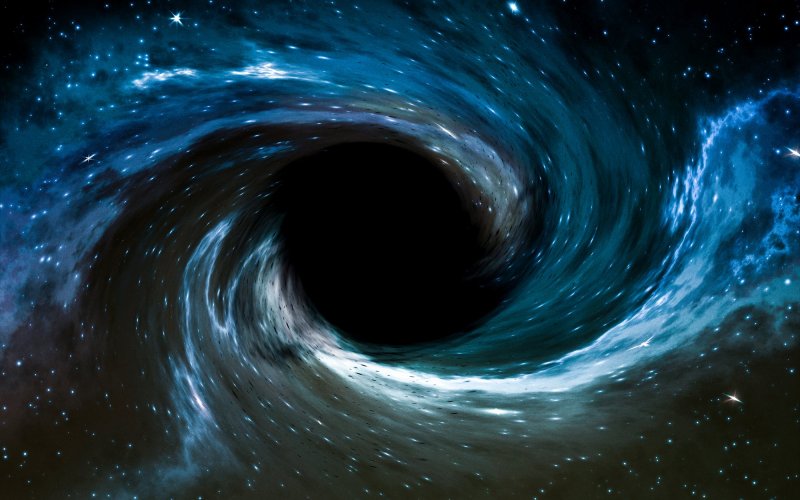We all have the experience that when we throw something, it falls to the ground.
The faster we throw an object, the further it lands.
If we throw it very fast, it will not fall to the ground, but will orbit the Earth.
How fast do we have to throw something depends on the mass of the Earth (or the planet we’re throwing on) and the height we’re throwing from.
In physics, we call this velocity the escape velocity.
As far back as the 18th century, John Mitchell wondered if there could be a planet (rather a star) that would be so heavy that its escape velocity would be greater than the speed of light — then no light could escape from it and would therefore be completely black.
The idea was forgotten for less than 200 years, until 1916, a year after Albert Einstein published his general theory of relativity. Karl Schwarzschild played with its equations and realized that it was possible for an area to form around a very heavy star that would be so curved that even light cannot escape (we call this area the event horizon).
This caused quite a commotion — neither physicists nor astronomers liked the idea of an extremely dense point with an area around it from which not even light could escape.
So it was thought to be just a mathematical trick, but in the 1970s we finally managed to find black holes in the Universe (which is of course quite difficult when they are black in a black Universe :D).
Today, we are quite sure how a black hole is formed — if we have a heavy star (several times heavier than the Sun), on which the fusion reaction stops, its own gravity will compress it so strongly that it will crush everything (first into atoms and eventually the atoms themselves ) to zero volume with enormous weight.
Everything that is pulled by the gravity of this object and eventually “sucked in” will increase the weight of the black hole, which will lead to the fact that the black hole will have more weight, the more surrounding bodies will be “sucked in”, so it will be heavier, …
Even in this “strangeness” (i.e. black hole), the laws of physics apply, such as the law of conservation of electric charge or the law of conservation of energy and of course the laws of quantum physics also apply, which means, besides other things, that black holes “evaporate” (described by Steven Hawking ) — the heavier they are, the faster they evaporate and thus lose weight.
Everything that a black hole sucks in will disintegrate during absorption (which means after passing through the event horizon) and may evaporate over time.
But it is necessary to realize that this is an irreversible process that ends with the smallest particles of matter.
Want to ask something?
Send us an e-mail with the subject “Physics mysteries” to the address:
We can't wait to tackle your interesting questions!





